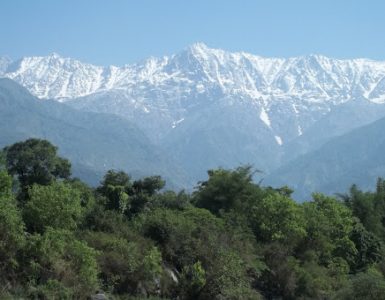From being known in history as the village of warriors and hunters a few years ago to now being recognized as India’s first green village, the story of Khonoma is fascinating and environmentally incredible.
The picturesque village is replete with trees, greenery, flowers, agricultural land, culture, history, traditions, and an amazing set of beautiful people.
Geography of the place
Khonoma is a village in the Indian state of Nagaland, located about 20 km from the state capital, Kohima, 80 km from Dimapur, and about 350 km from the Myanmar border.
The village is spread over the top of a hill, which stands at an altitude of 5320 feet above sea level and the landscape is hilly, ranging from gentle slopes to steep and rugged hillsides.
History of Khonoma
The state of Nagaland is blessed with stunning landscapes and that’s probably the biggest reason for its rich history and tradition. The region is inhabited by several indigenous communities. Each of these communities is commonly referred to as a tribe with unique beliefs, culture, language, and clothing styles.
The Angami tribe is one of the largest ethnic groups in the region in terms of population. The people of the Angami tribe are mainly settled in the state capital, Kohima, Dimapur, and surrounding villages. Similar to most tribes, the Angami tribe were also ferocious warriors and fighters, and one of the ritual practices back in the day was headhunting.
Khonoma is one of the many hill villages where the people of the Angami tribe live. Located on top of a hill, Khonoma was established over 500 years ago and is divided into three clans, namely Merhü-ma (M-Khel), Semo-ma (S-Khel), and Thevo-ma (T-Khel).
In the middle of the 19th century, when the Britishers were attempting to establish complete dominion over the Indian subcontinent, they also made their way to Khonoma.
The Angami tribe of this village was not ready to take this hands down and fiercely defended their territory. In the years ensuing between 1850 and 1880, the Khonoma saw a series of struggles, fights, and armed resistance between the Britishers and its local people. The local Khonoma fort also went through destruction and subsequent reconstruction in this time period.
In March 1880, a peace treaty was signed with the Britishers, which led to a culmination of the conflicts. This resolute display of valor against British invasion has made the story of Khonoma etched in Indian history.
Khonoma was included in the state of Nagaland, when it became the 16th state of India on 1 December 1963.
From being fighting warriors to green warriors
There are many reasons that make Khonoma a green village in India.
The hills on which the Khonoma is located are surrounded by lush greenery, forestland, and a variety of species of flora and fauna, one of which has given its name. The village name refers to a local aromatic plant called Khwuno (Gaultheria fragrantissima).
Unfortunately, this abundant wildlife also gave an opportunity to the local people to indulge in hunting. The practice became a way of life for the people in the region and every year thousands of birds and animals were killed for food and fun.
In 1993, more than 300 Blyth’s tragopan were killed in one such hunting expedition. The magnitude of this killing made local administration and some members of the village community extremely concerned. It was largely felt that if this practice continues future generations will be bereft of its natural resources.
However, for a tribe that had their forefathers universally practicing headhunting and animal hunting, it was not an easy journey.
In the following years, efforts were made to put an end to hunting. An area in the forest was demarcated and created as Khonoma Nature Conservation and Tragopan Sanctuary. In 1998, it was decided to completely ban hunting in the entire village.
People from the village were made guardians and members of the local bodies that monitored conservation efforts. The administration ensured that apart from penalties, the local people were made enforcers of the rules.
In addition, outside assistance from government bodies, NGOs, and other experts was also taken for specialized guidance. Environmental awareness programs were also conducted to sensitize people in the village and community. One of the key messages was to highlight the aspect of ecological conservation from the perspective of future generations.
Over the next few years, the conservation efforts also encapsulated the preservation of trees and other natural resources.
As the terrain surrounding the village is hilly, steep, and rugged, the people followed a unique form of agriculture, known as shifting (jhum) cultivation. Through this method, the land is cultivated for two years in a row and then left fallow for the natural forest to regenerate.
All these efforts started to bear results, it was duly recognized when Khonoma became India’s first Green village in 2005.
Green practices followed in Khonoma


For farming, chemical pesticides and fertilizers are avoided, and instead, the use of organic manure is preferred which is actively sourced from composting that is done using kitchen waste.
Almost every home in the village has an organic kitchen garden in its backyard, front yard, or in some close proximity. Colorful fruits and vegetables adorn the garden.
Many houses in the Khonoma village are made of wood and bamboo and the floors are plastered with mud. For housing essentials, bamboo products are extensively used in daily life. Potted plants and multicolored flowers could be seen hanging on balconies and courtyards of most of the houses in the village.
Not just in the houses, but in the common areas of the villages, various environmental efforts are taken.
To ensure cleanliness and solid waste management, garbage bins are placed every few steps. Community water tanks are constructed at different locations to supply water to houses.
The streets of the village are neatly laid out along the slopes with flowers and plants adorning the edges and illuminated by streetlights that are powered by solar energy.
The people of the village are also skilled in handicrafts and other eco-friendly products like bamboo works, wood works, and pottery.
Wrapping Up
From being once known as a village of warriors to now being called a Green village, Khonoma has come a long way.
Khonoma is not only India’s first green village but is also said to be the first green village in Asia.
This historical village has exemplified that if the right approach toward environmental conservation is exerted, great results can be achieved.
You can watch this video on the Change Started YouTube channel for a quick visual perspective.







Add comment